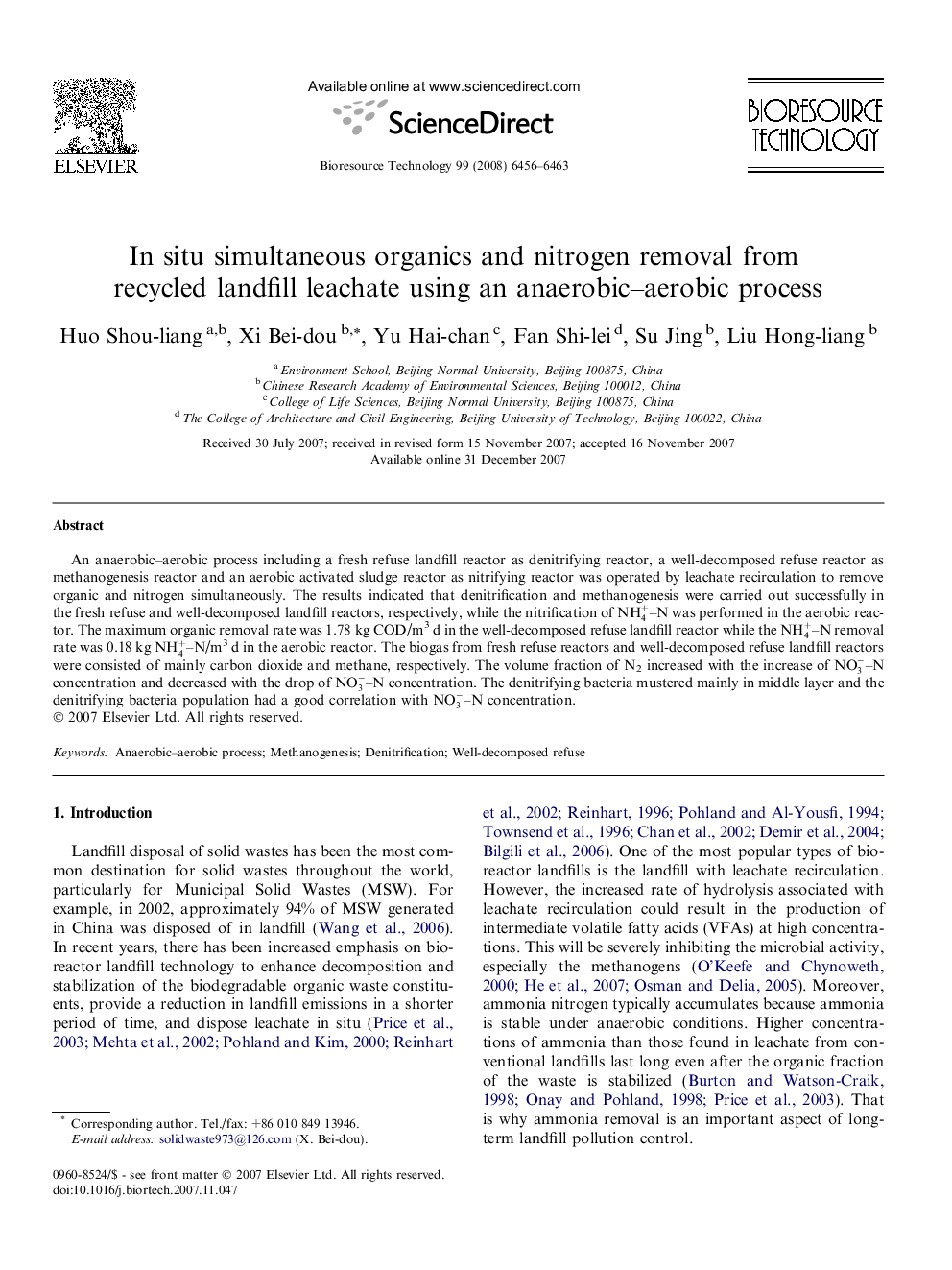| کد مقاله | کد نشریه | سال انتشار | مقاله انگلیسی | نسخه تمام متن |
|---|---|---|---|---|
| 684898 | 889029 | 2008 | 8 صفحه PDF | دانلود رایگان |

An anaerobic–aerobic process including a fresh refuse landfill reactor as denitrifying reactor, a well-decomposed refuse reactor as methanogenesis reactor and an aerobic activated sludge reactor as nitrifying reactor was operated by leachate recirculation to remove organic and nitrogen simultaneously. The results indicated that denitrification and methanogenesis were carried out successfully in the fresh refuse and well-decomposed landfill reactors, respectively, while the nitrification of NH4+–N was performed in the aerobic reactor. The maximum organic removal rate was 1.78 kg COD/m3 d in the well-decomposed refuse landfill reactor while the NH4+–N removal rate was 0.18 kg NH4+–N/m3 d in the aerobic reactor. The biogas from fresh refuse reactors and well-decomposed refuse landfill reactors were consisted of mainly carbon dioxide and methane, respectively. The volume fraction of N2 increased with the increase of NO3-–N concentration and decreased with the drop of NO3-–N concentration. The denitrifying bacteria mustered mainly in middle layer and the denitrifying bacteria population had a good correlation with NO3-–N concentration.
Journal: Bioresource Technology - Volume 99, Issue 14, September 2008, Pages 6456–6463